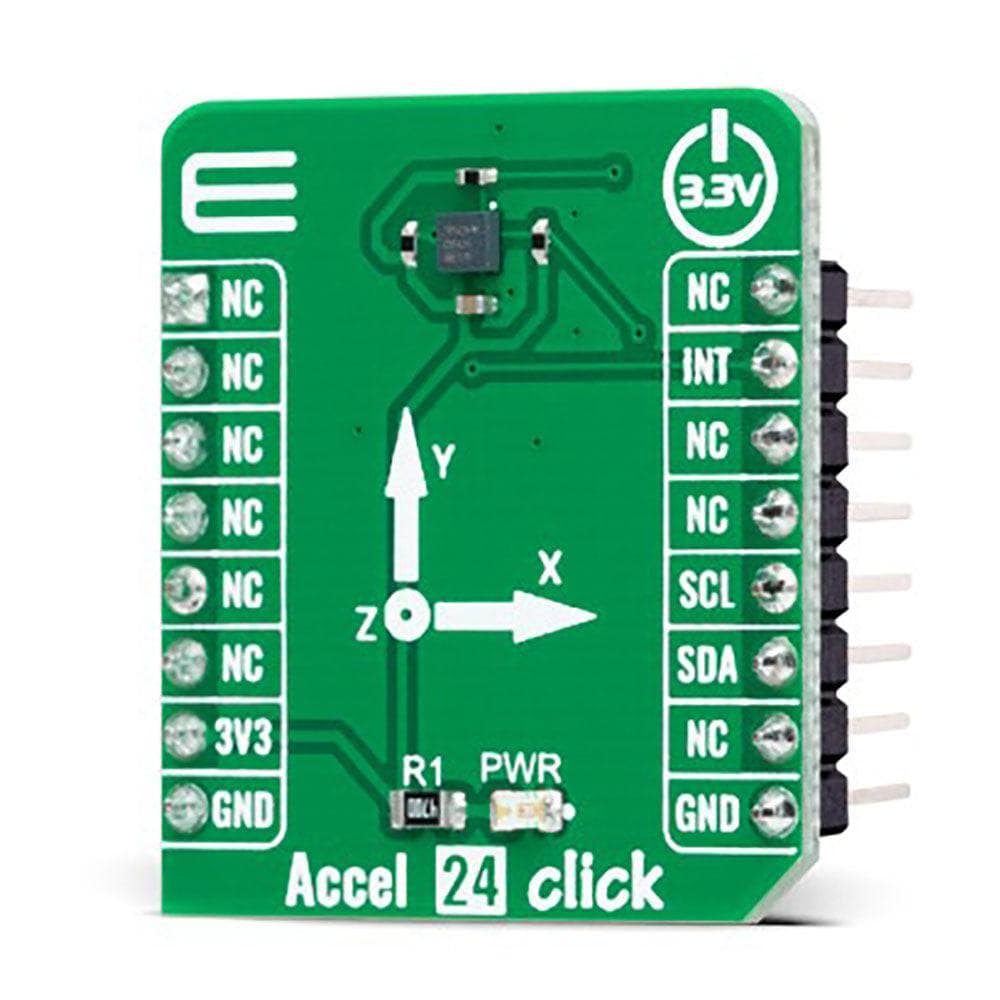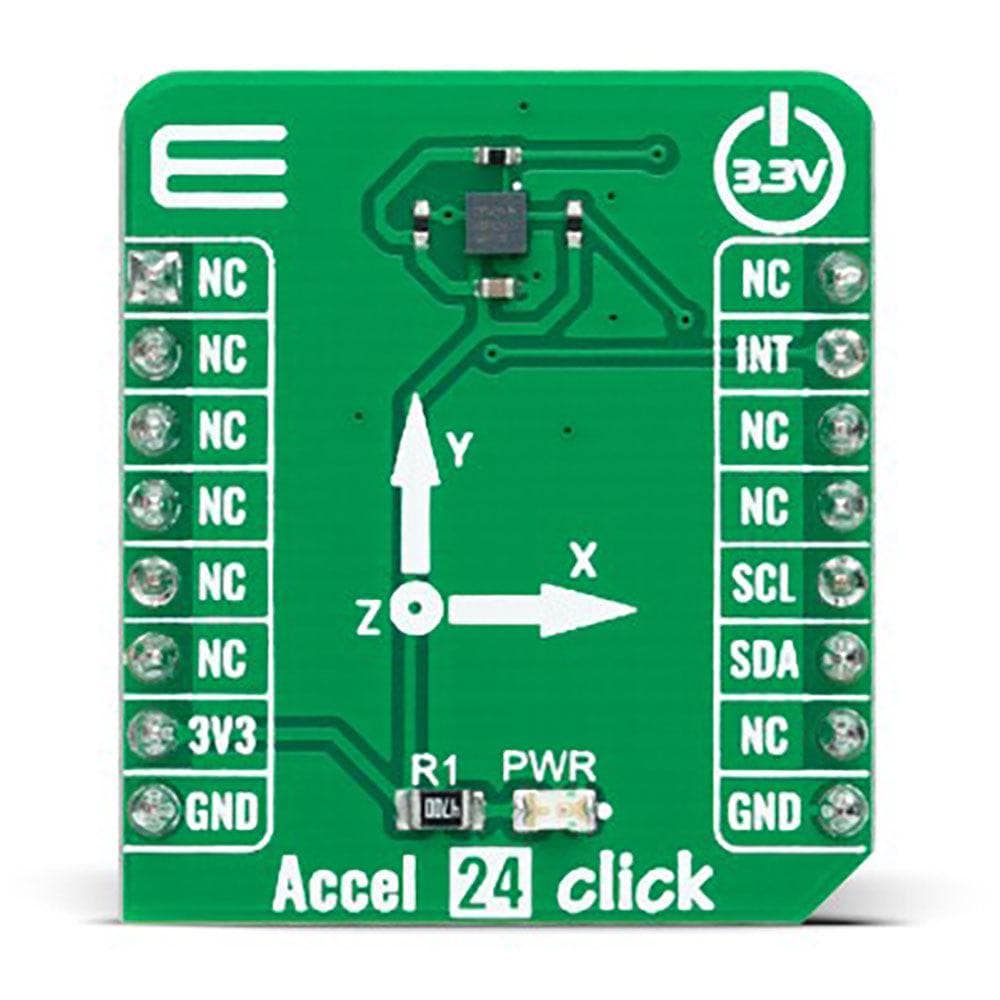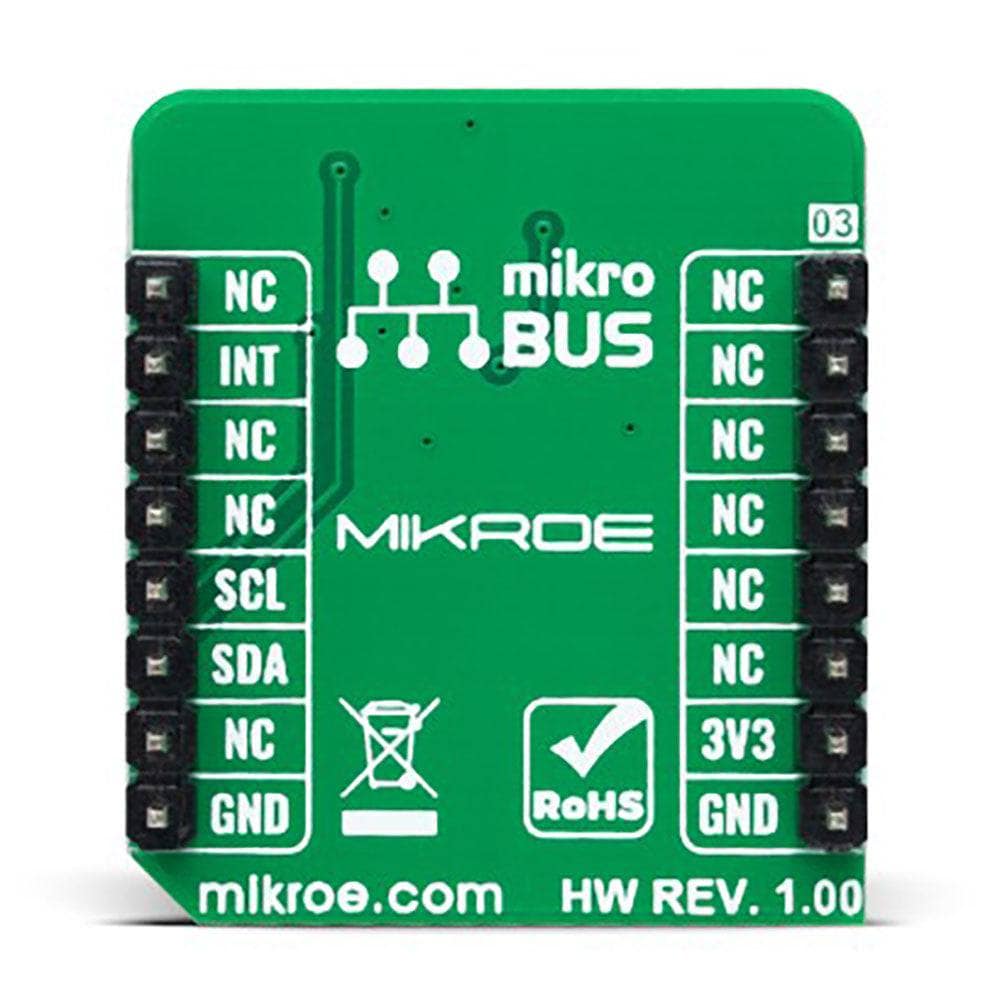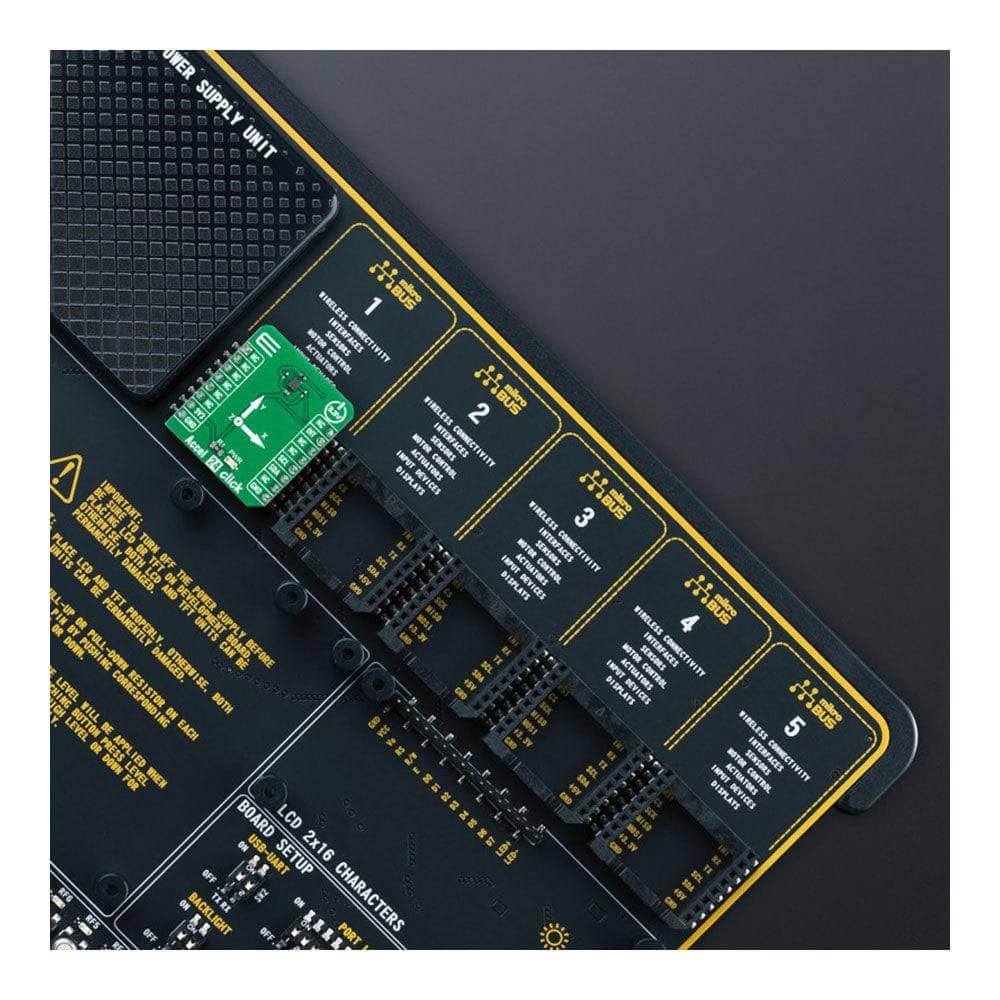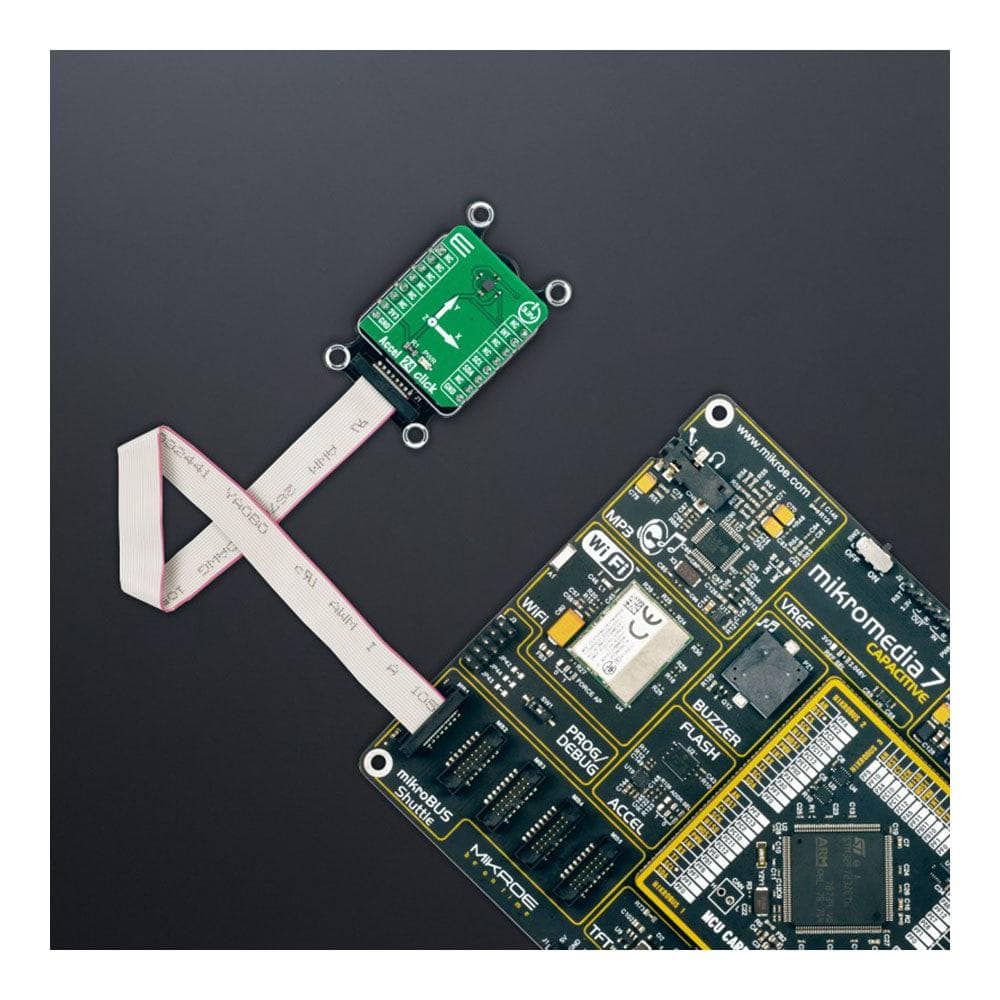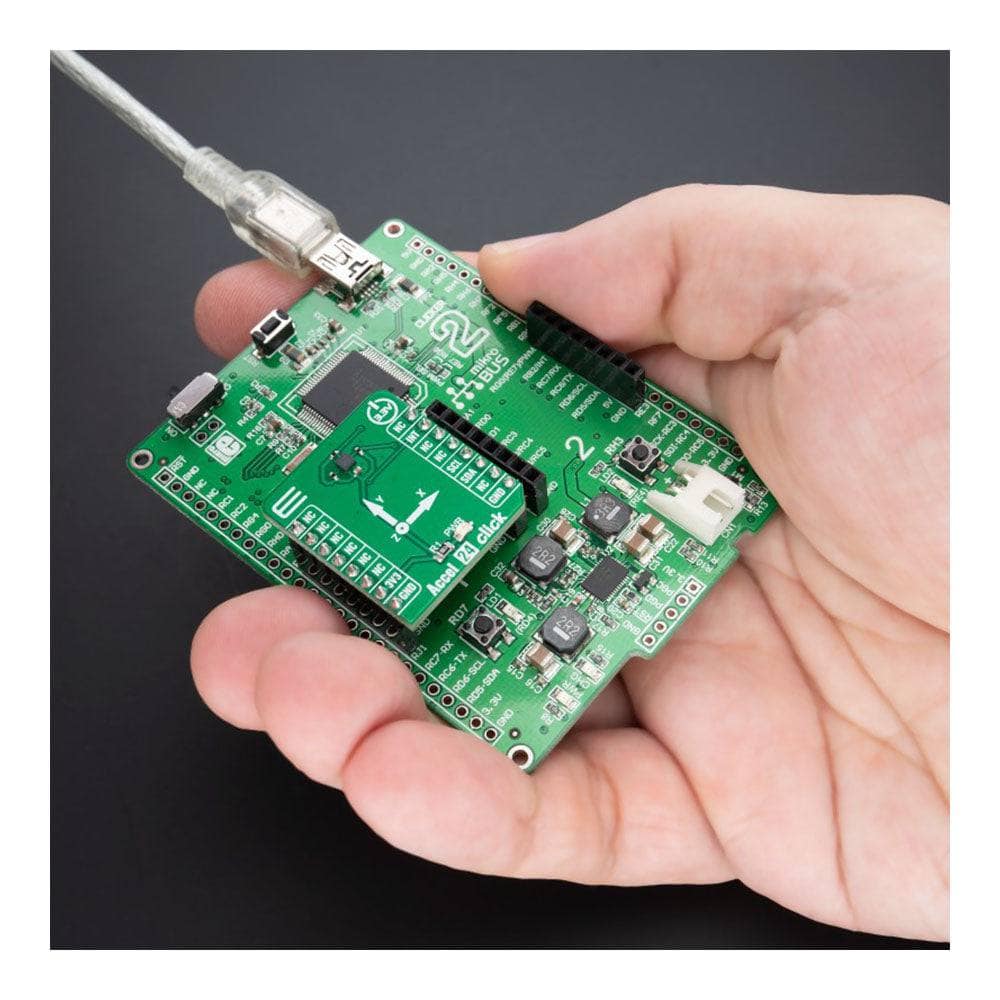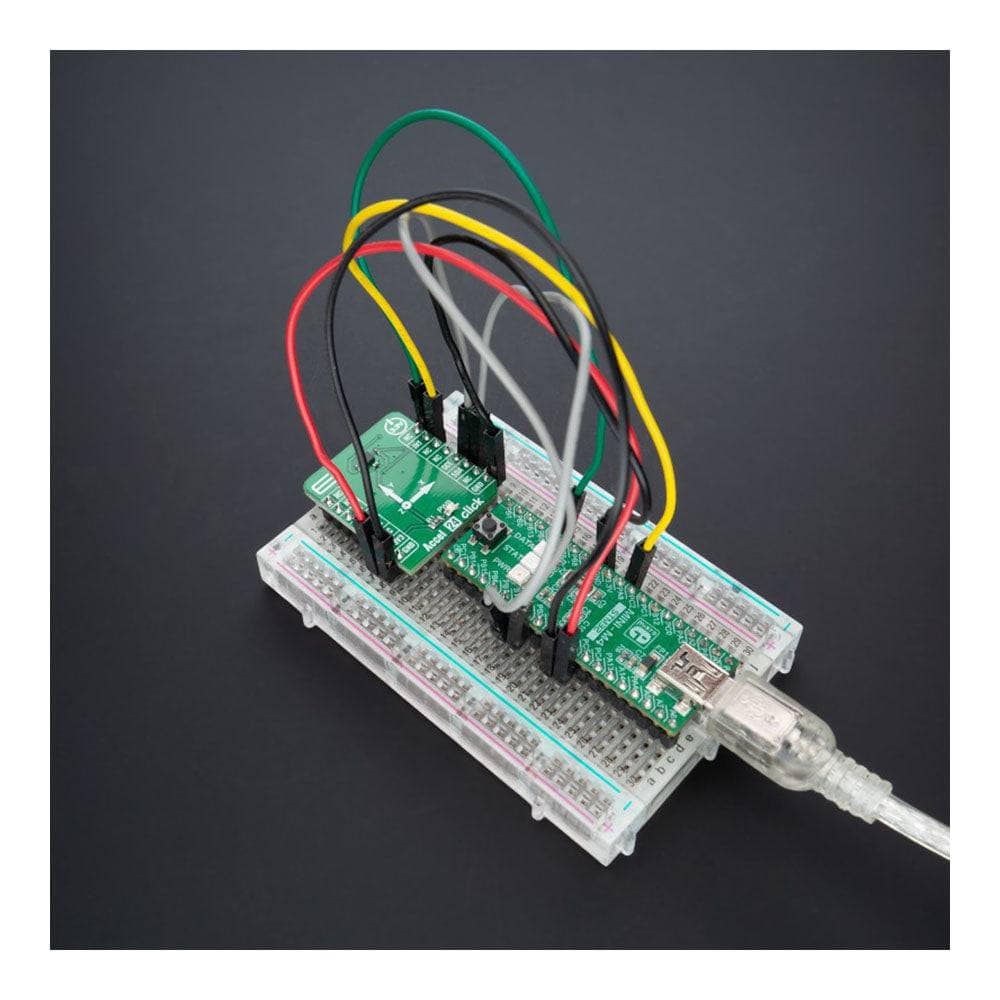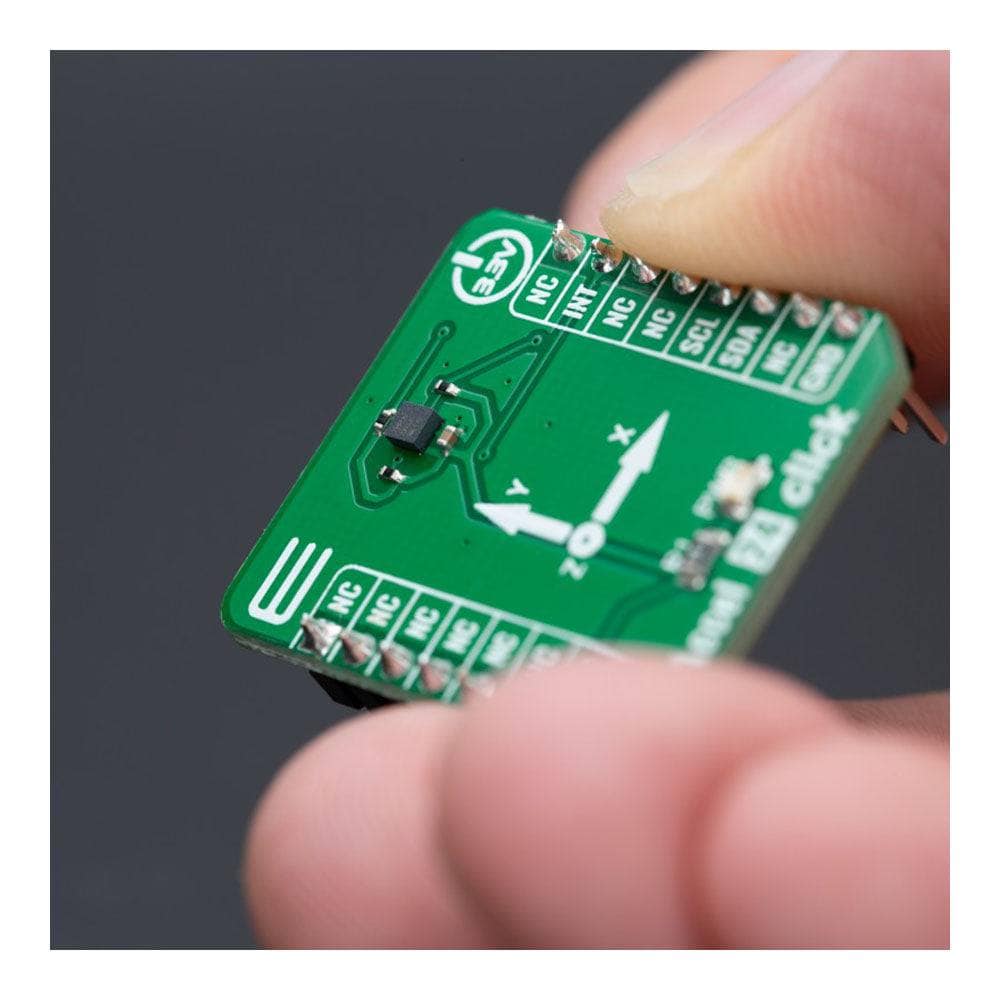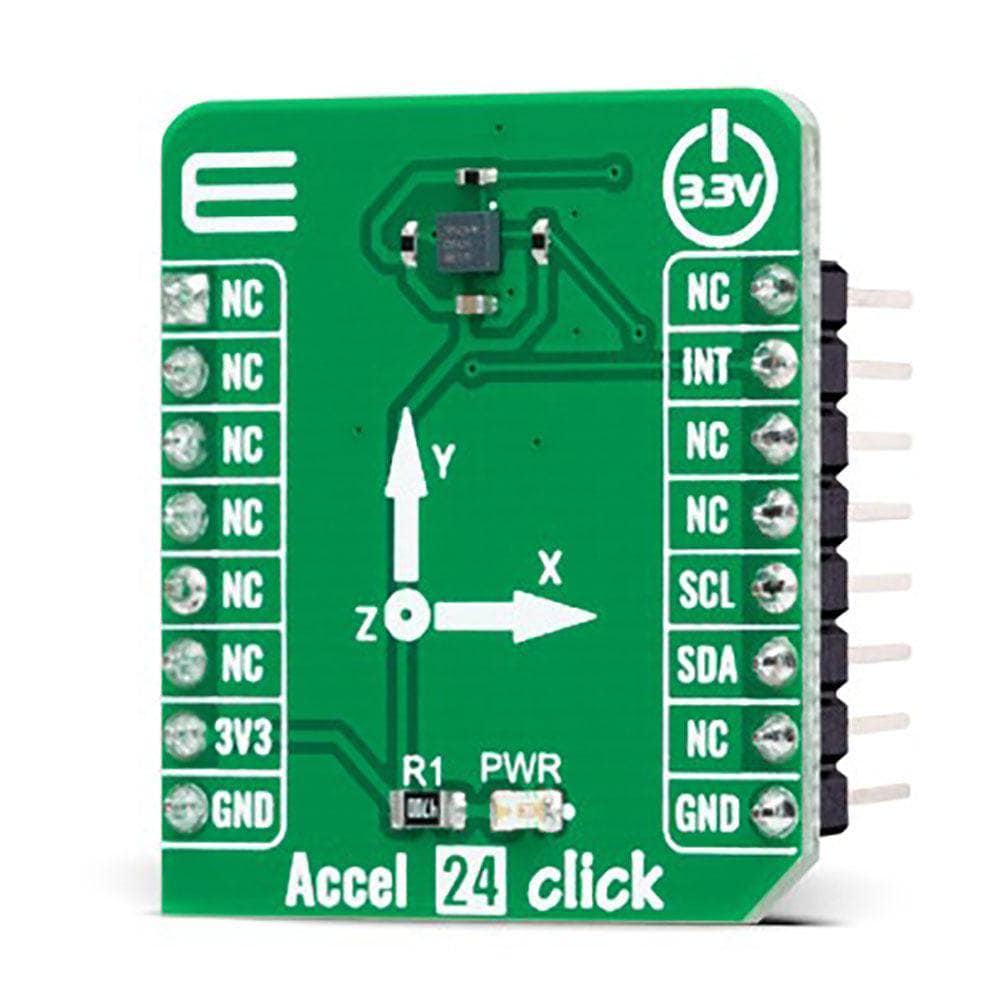
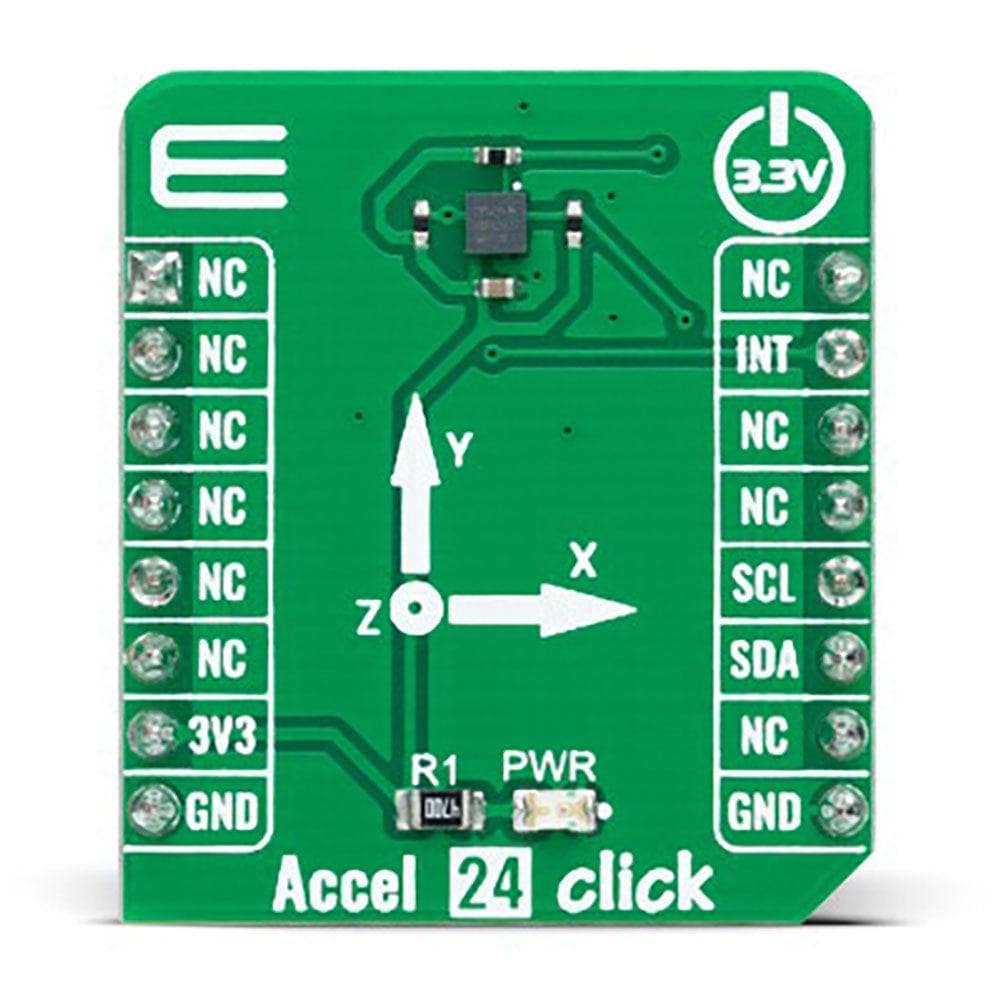
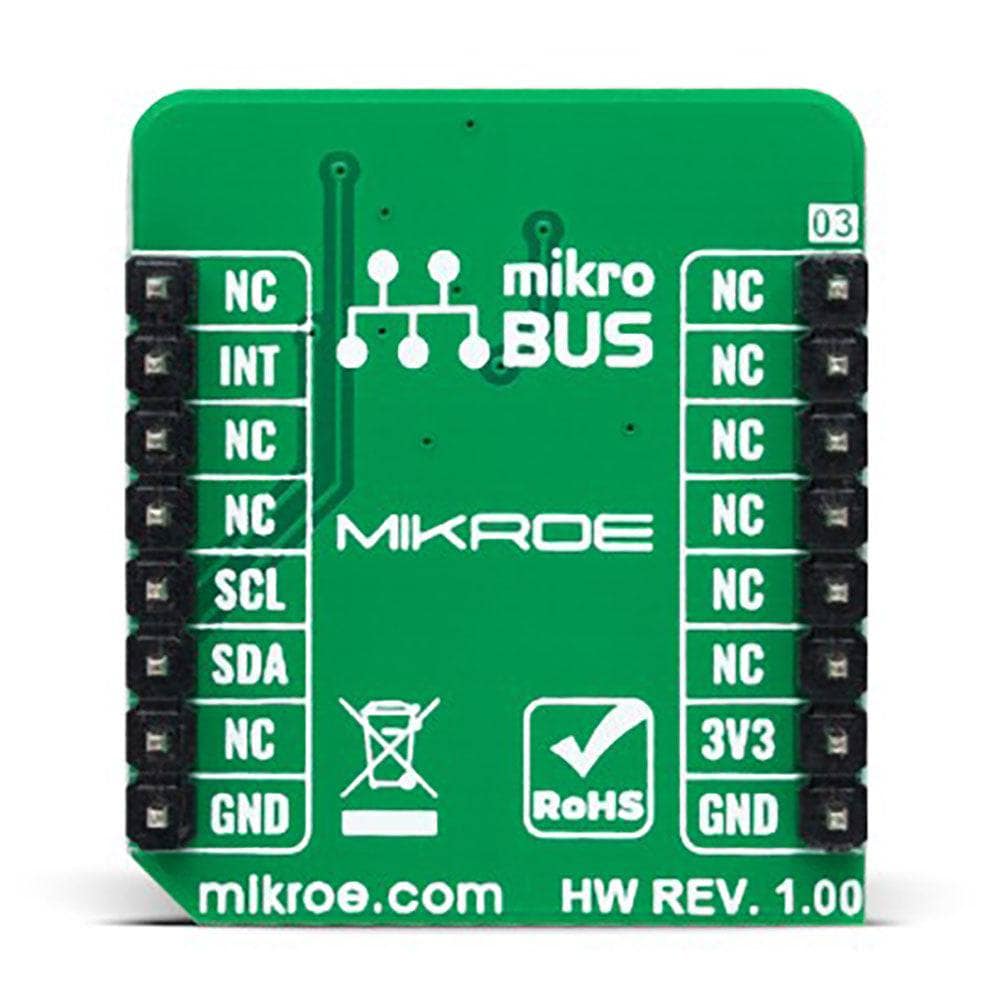
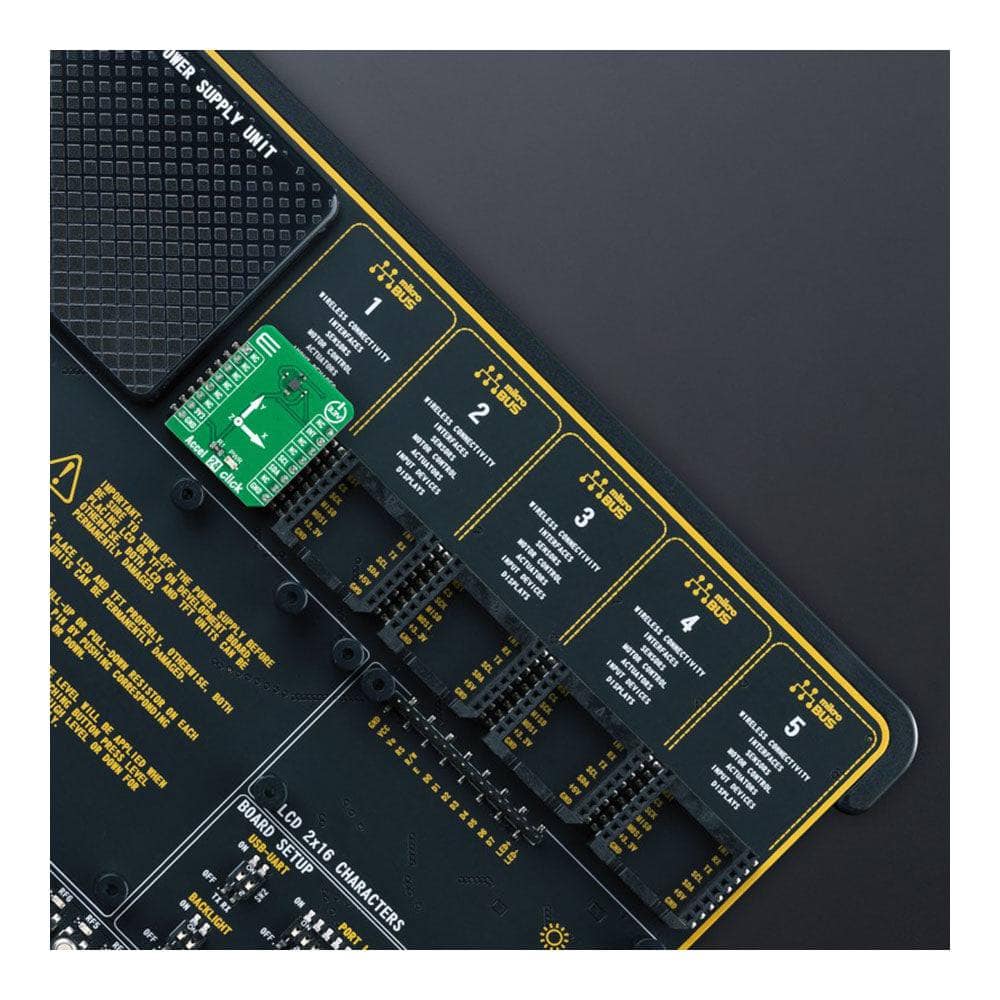
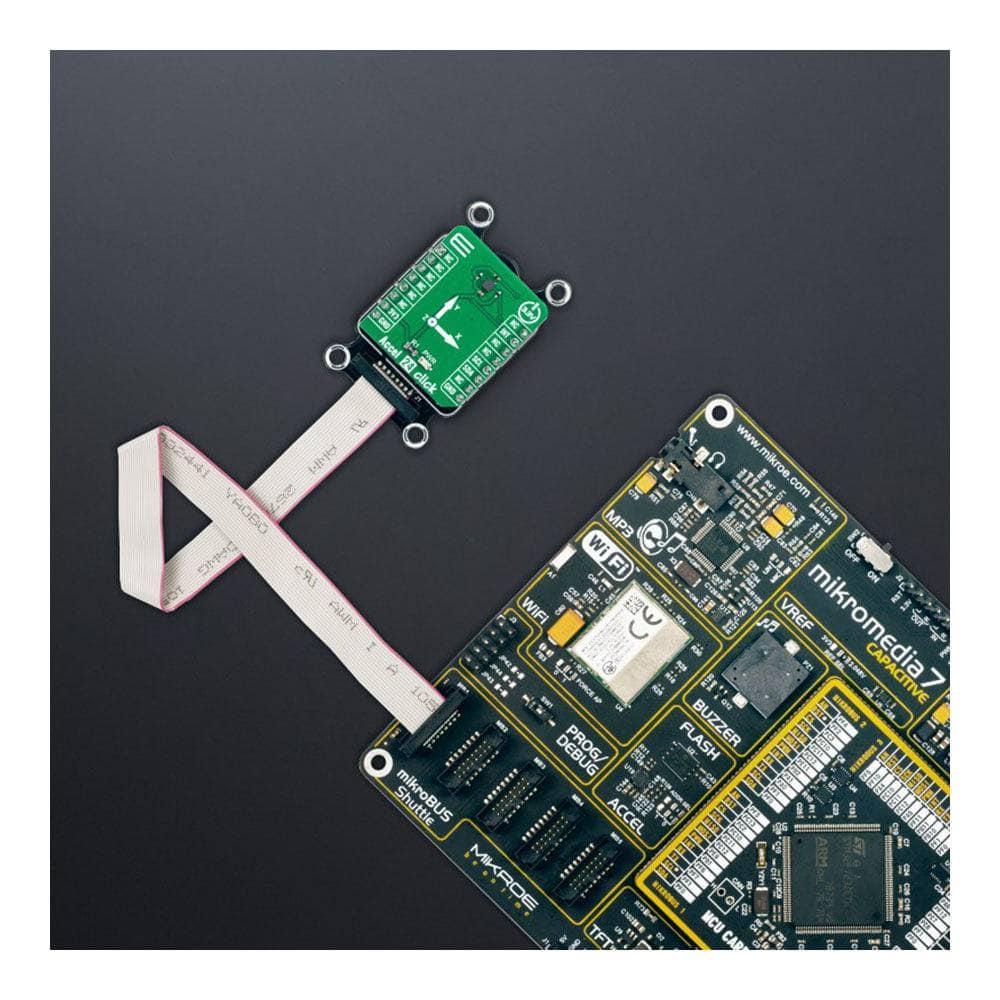
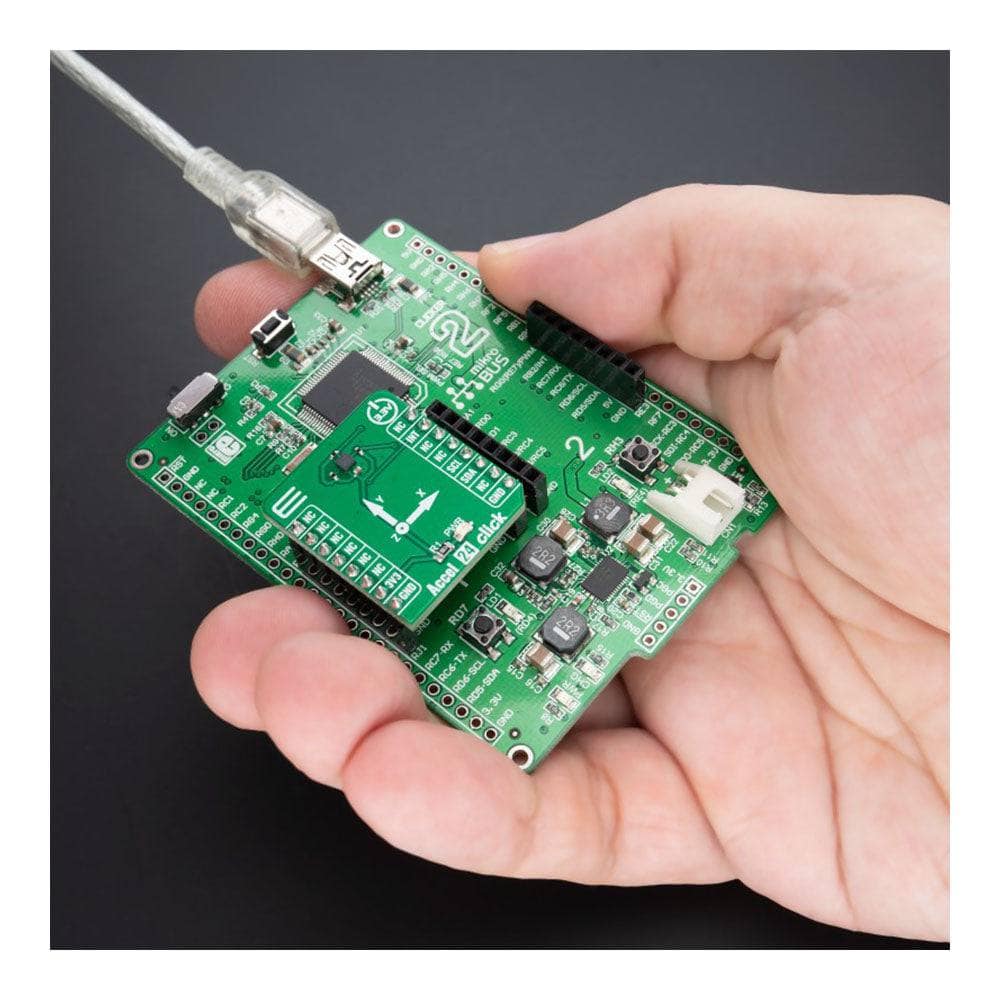
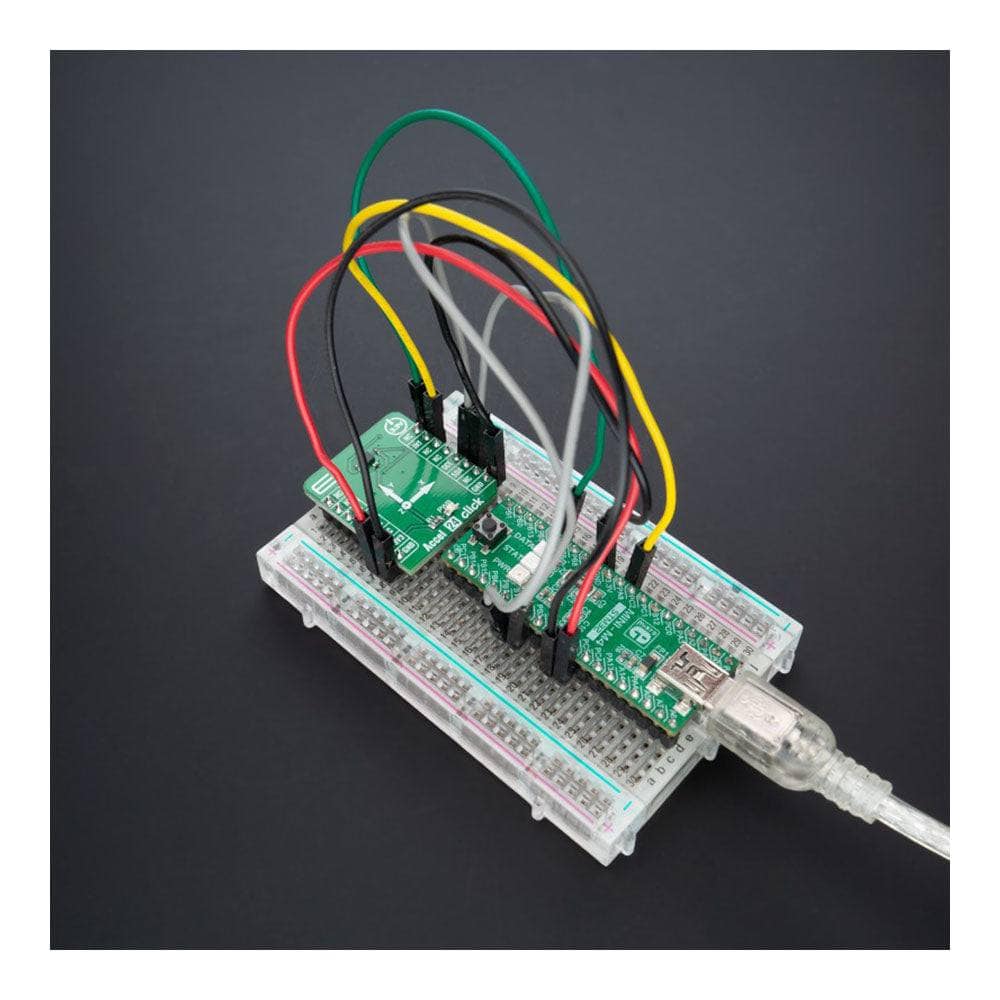
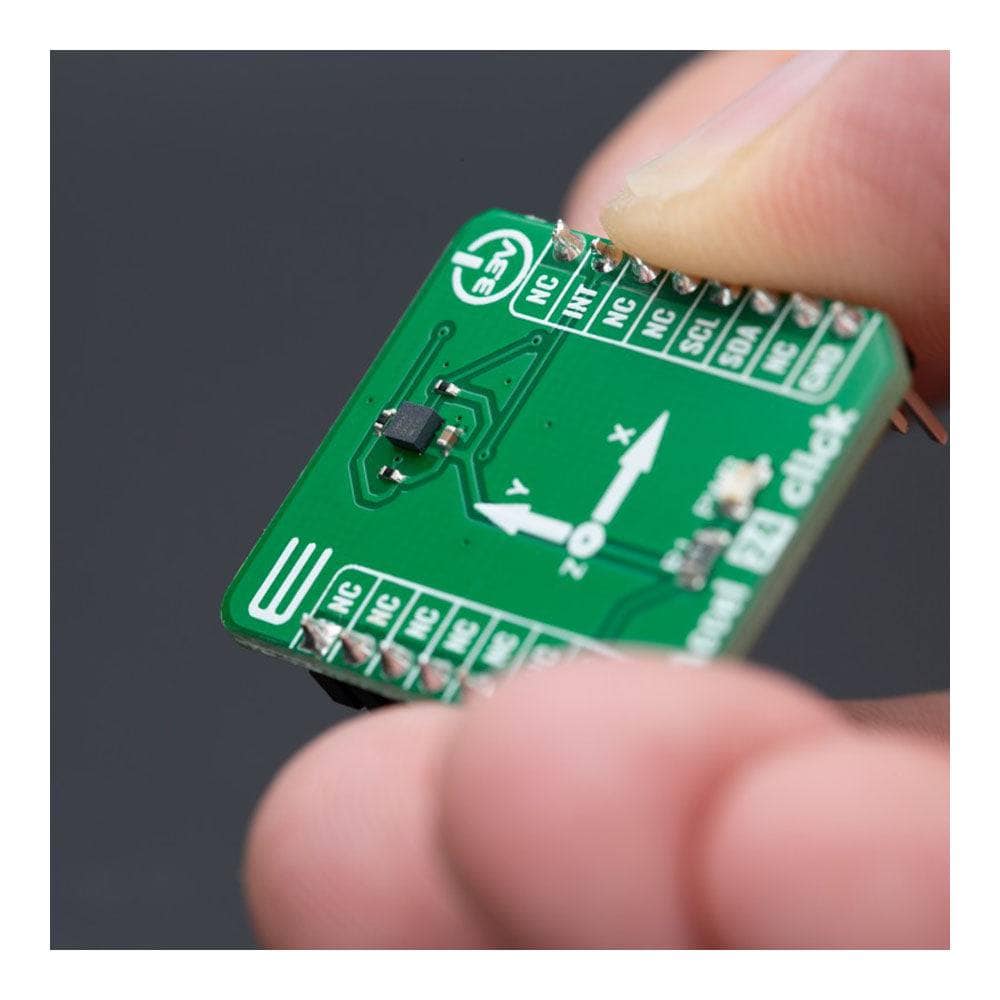
Key Features
Overview
The Accel 24 Click Board™ is a compact add-on board with an acceleration sensor. This board features the MXC6655XA, a 12-bit three-axis accelerometer from MEMSIC. It allows selectable full-scale acceleration measurements in ranges of ±2g, ±4g, or ±8g in three axes with a compatible I2C serial interface with 400KHz fast mode operation. Alongside low offset and temperature signal with high accuracy, the MXC6655XA also detects six orientation positions, X/Y shake, and shake directions with an appropriate interrupt signal for these states. This Click board™ is suitable for a wide range of information appliances, consumer electronics, household safety applications, and many more.
The Accel 24 Click Board™ is supported by a mikroSDK-compliant library, which includes functions that simplify software development. This Click board™ comes as a fully tested product, ready to be used on a system equipped with the mikroBUS™ socket.
Downloads
How Does The Accel 24 Click Board™ Work?
The Accel 24 Click Board™ is based on the MXC6655XA, a highly reliable digital triaxial acceleration from MEMSIC. The MXC6655XA is highly configurable with a programmable acceleration range of ±2g, ±4g, or ±8g based on MEMSIC's proprietary thermal technology built with a 0.18μm standard CMOS process. It contains no moving sensor parts, eliminating field reliability and repeatability issues; there is no measurable resonance (immunity to vibration), no stiction, and no detectable hysteresis.
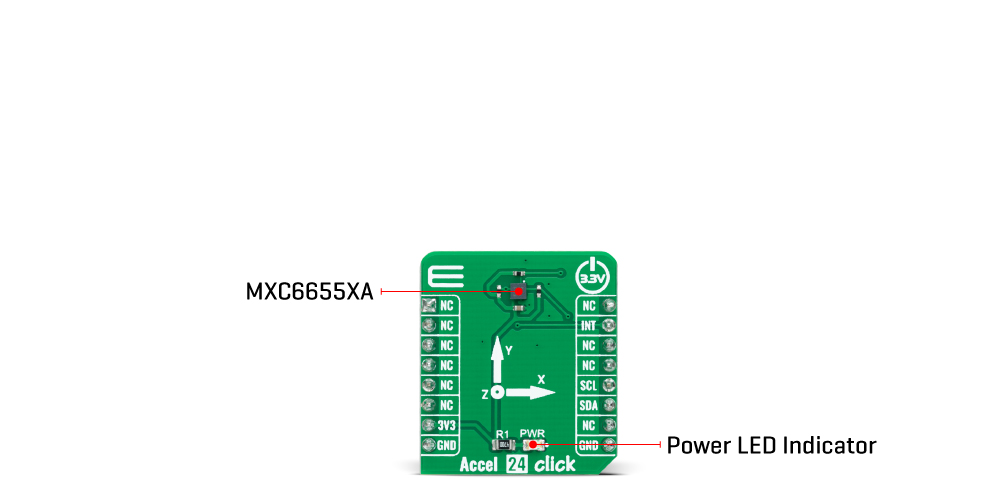
The MXC6655XA also eliminates the "click" sounds typically heard in ball-based orientation sensors. The shock survival of this MEMS sensing structure is greater than 200,000g. This sensor provides X/Y/Z axis acceleration signals with a low 0g offset and temperature signals with high accuracy. In addition, it also detects six orientation positions, X/Y shake, and shakes directions.
The Accel 24 Click Board™ communicates with MCU using the standard I2C 2-Wire interface to read data and configure settings capable of operating in a standard or fast mode of operation. The acceleration signal is provided in 12-bit output resolution. In addition to communication pins, this board also possesses an additional interrupt pin, routed to the INT pin on the mikroBUS™ socket, for orientation and X/Y shake detections. The MXC6655XA allows users to be placed in a Power-Down mode enabled through the I2C interface.
The Accel 24 Click Board™can be operated only with a 3.3V logic voltage level. The board must perform appropriate logic voltage level conversion before using MCUs with different logic levels. However, the Click board™ comes equipped with a library containing functions and an example code that can be used, as a reference, for further development.
SPECIFICATIONS
| Type | Motion |
| Applications | Can be used for a wide range of information appliances, consumer electronics, household safety applications, and more |
| On-board modules | MXC6655XA - digital triaxial acceleration from MEMSIC |
| Key Features | Low power consumption, high performance and resolution, MEMS sensor with on-chip signal processing, no moving parts, 12-bit signal output for X, Y and Z axes, 6-position orientation detection, shake detection with interrupt, I2C interface, and more |
| Interface | I2C |
| Compatibility | mikroBUS |
| Click board size | S (28.6 x 25.4 mm) |
| Input Voltage | 3.3V |
PINOUT DIAGRAM
This table shows how the pinout of the Accel 24 Click Board™ corresponds to the pinout on the mikroBUS™ socket (the latter shown in the two middle columns).
| Notes | Pin |  |
Pin | Notes | |||
|---|---|---|---|---|---|---|---|
| NC | 1 | AN | PWM | 16 | NC | ||
| NC | 2 | RST | INT | 15 | INT | Interrupt | |
| NC | 3 | CS | RX | 14 | NC | ||
| NC | 4 | SCK | TX | 13 | NC | ||
| NC | 5 | MISO | SCL | 12 | SCL | I2C Clock | |
| NC | 6 | MOSI | SDA | 11 | SDA | I2C Data | |
| Power Supply | 3.3V | 7 | 3.3V | 5V | 10 | NC | |
| Ground | GND | 8 | GND | GND | 9 | GND | Ground |
ONBOARD SETTINGS AND INDICATORS
| Label | Name | Default | Description |
|---|---|---|---|
| LD1 | PWR | - | Power LED Indicator |
ACCEL 24 CLICK ELECTRICAL SPECIFICATIONS
| Description | Min | Typ | Max | Unit |
|---|---|---|---|---|
| Supply Voltage | - | 3.3 | - | V |
| Acceleration Range | ±2 | - | ±8 | g |
| Acceleration Resolution | - | 12 | - | bits |
| Sensitivity (±2 ~ ±8) | 256 | - | 1024 | LSB/g |
| Operating Temperature Range | -40 | +25 | +85 | °C |
| General Information | |
|---|---|
Part Number (SKU) |
MIKROE-5336
|
Manufacturer |
|
| Physical and Mechanical | |
Weight |
0.02 kg
|
| Other | |
Country of Origin |
|
HS Code Customs Tariff code
|
|
EAN |
8606027387104
|
Warranty |
|
Frequently Asked Questions
Have a Question?
Be the first to ask a question about this.

